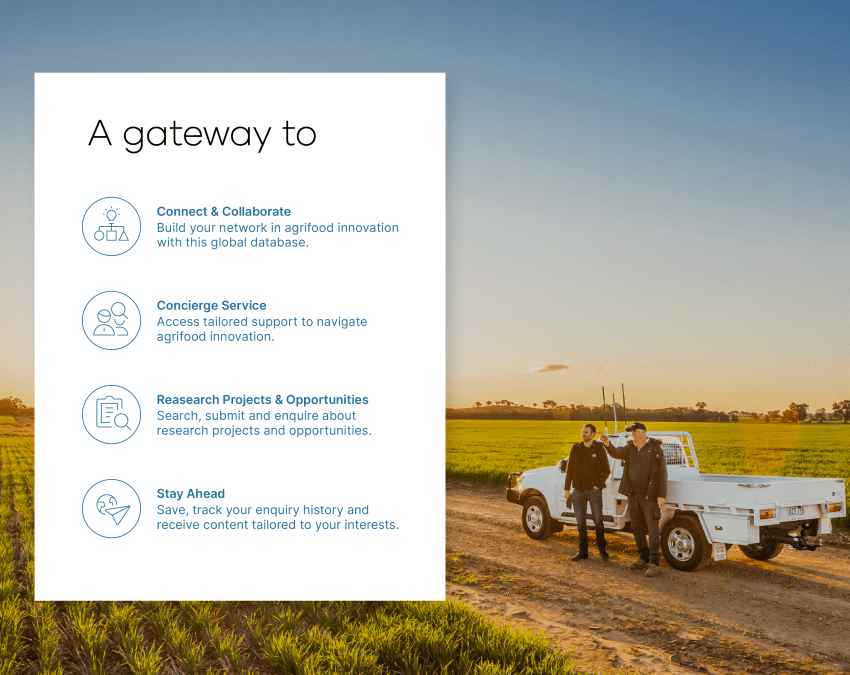-contain-250x120.jpg)
Opportunity for
- Australian and international grain buyers, feed mills, food testing laboratories and integrated livestock companies involved in pork, poultry or beef production seeking to license in vivo Near Infra-red (NIR) energy cereal calibrations
- Partners / Investors to enhance utilisation of AusScan technology from benchtop to field application through miniaturisation.
Opportunity description
Industry challenge:
Approximately 13.5 million tonnes of the Australian grain harvest is destined for feed grain. However current quality measures for cereal grains such as protein content, moisture, test weight and falling number are inadequate for feed formulations designed to optimise animal performance.
A world first in cereal grain evaluation, the AusScan Online calibrations measure the digestible energy (DE) in cereal grains for different livestock species. Having access to the in vivo energy values for cereal grains allow Nutritionists to formulate feeds which optimise the animals growth potential. The largest input cost for pig, poultry and grain fed cattle production is feed, and finisher rations contain up to 70% cereal grain. A difference of 1MJ/kg for a cereal grain equates to $20-$25 per tonne when the grain is valued at $300/tonne.
The calibrations are suitable for national and international markets. The AusScan Online calibrations include wheat, barley, triticale, sorghum and maize. The calibrations are the most accurate method for predicting DE value for cereal grains for different livestock species. AusScan Online continues to maintain and update the calibration through programmed metabolisation studies.
Current opportunity:
Australian Pork Research Institute Ltd (APRIL) are seeking engagement with grain buyers, laboratories, feed mills or producers to sub-license the in vivo NIR energy cereal calibrations. A sub-licence will allow access to the AusScan Online website and a pay as you go system for:
- in vivo energy cereal calibrations for pigs, poultry and ruminants
- reactive lysine calibrations for soybean and canola.
AusScan is gaining momentum globally, with scan numbers increasing from 2,200 in the 2015 launch year to greater than 40,000 scans per annum since 2018. This growth highlights the value of AusScan's unique reactive lysine calibration which assesses the quality of soybean and canola meals and the unique calibrations for pig DE, poultry apparent metabolisable energy and ruminant metabolizable energy (ME) for cereal grains.
AusScan calibrations enable the sub-licensor to further differentiate feed grains in the current market as well as provide information to Grain buyers to aid in the mapping of storage facilities for superior grains for livestock production.
An opportunity exists for further R&D with partners to validate miniature NIR devices for field application.
Opportunity background:
Prior to the AusScan technology, calculations of the DE content of a grain involved prediction equations using either the test weight or chemical composition of the grain. Both methods were limited in application due to over predicting the DE values of low faecal DE grains or not discriminating between grain type or samples.
The intensive livestock industries required more accurate measures of grain quality in order to purchase consistent high-quality feed grains. The Premium Grains for Livestock Program (PGLP) began in 1996, and one of its goals was to determine a more rational procedure to accurately predict the available energy content of cereal grains for livestock.
The agricultural industry adopted NIR technology in the early 1980s, and in 1996 with the aid of a Foss 6500 NIR instrument, the PGLP began its first pig DE study to develop the in vivo energy calibrations using NIR technology which has transformed how grain is assessed today. The effect of environment on the energy value of grains for livestock is often greater than the effect of cultivar. The current calibrations contain data from studies which include samples of weather damaged (natural and artificial), pinched grains, as well as a wide range of cereals including triticale and maize samples. These upgrades served to improve the robustness of the calibrations.
Today, the current AusScan Online calibrations are the most accurate method of predicting DE values for cereal grains fed to different livestock species.
Opportunity type
Readiness
Opportunity led by
-contain-250x120.jpg)
Focus areas
Industries
Sustainabilities
Technology areas
Related opportunities
Search all opportunities-crop-850x675.png)
Looking for engagement?
Showcase your commercialisation opportunity today.
Talk to our team to discuss how growAG. can connect your innovation to industry.
Have questions? Find answers to our most frequently asked questions on research projects, commercial opportunities, organisations and more.

-crop-526x414.jpg)